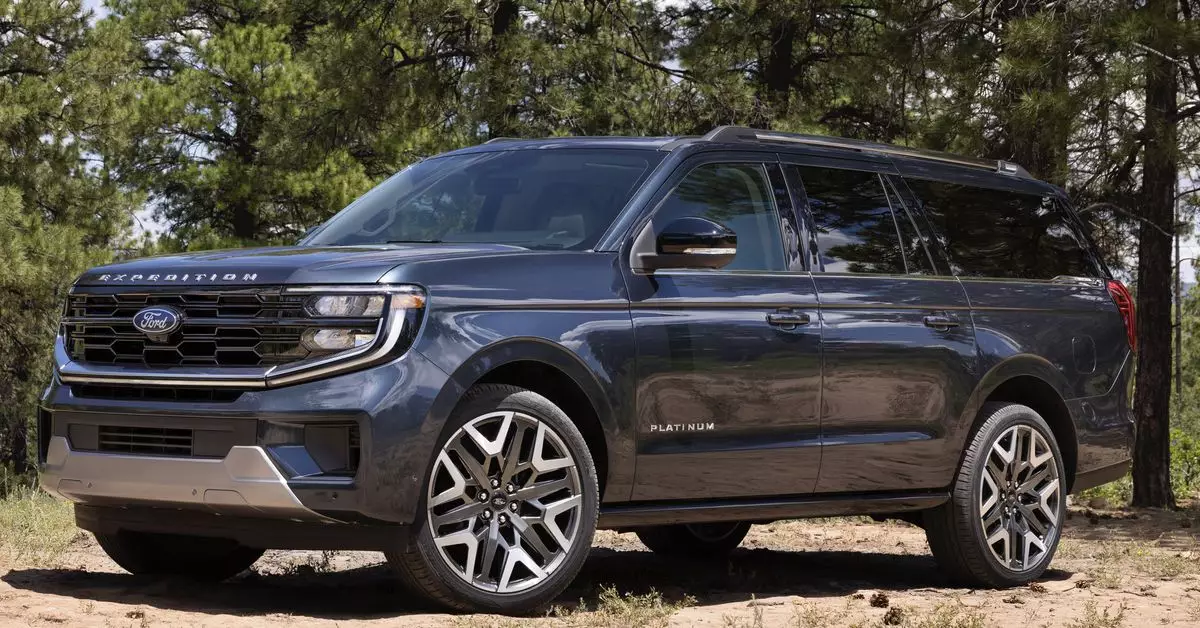The automotive arena is abuzz with innovations, and Ford is making waves with its redesigned flagship SUV, the 2025 Expedition. As electric vehicles and advanced infotainment systems become paramount, Ford introduces this new model equipped with its cutting-edge Digital Experience infotainment system. This noteworthy addition marks a significant move for the manufacturer as it aims to infuse technology into an increasingly competitive market dominated by luxury and performance.
At the heart of the new Expedition’s allure is its Android Automotive-based Digital Experience system, echoing design elements seen in the luxurious Lincoln Nautilus. However, while the Nautilus showcases a grand 48-inch pillar-to-pillar display, the Expedition opts for a more compact 24-inch panel, hinting at a balance between affordability and technological sophistication. It retains a modern instrument cluster while featuring familiar functionalities such as an integrated Google Play Store and support for Apple CarPlay. Users can leverage both Google Assistant and Amazon’s Alexa, although only one can be activated at a time—a limitation that might frustrate tech-savvy consumers who desire seamless operation.
Spaciousness has always been integral to the appeal of SUVs, and the 2025 Expedition capitalizes on this aspect with versatile seating configurations. The vehicle can comfortably accommodate up to eight passengers, especially with the bench seating option, making it an ideal choice for families or those needing extra space. An interesting addition is the smartphone or tablet holders integrated into the first-row seatbacks, catering to modern passengers who expect to stay connected on the go. This focus on passenger comfort creates a sophisticated balance between practicality and entertainment, evidencing Ford’s understanding of today’s consumer demands.
Powering the 2025 Expedition is a robust 3.5-liter EcoBoost V6 engine that delivers impressive performance. Ford also introduces a new Tremor trim designed for adventure enthusiasts, boasting an output of 440 horsepower and enhanced off-road capabilities thanks to its specialized suspension and terrain modes. However, it’s worth noting that the departure from hybrid powertrain options may leave environmentally conscious buyers seeking alternatives. This aspect raises questions about Ford’s strategy as competitors rapidly unveil hybrid and electric variations in their lineups.
Design-wise, the Expedition appears to be leveraging stylistic cues from the Lincoln Navigator, integrating a split rear gate and notable front light bar to create an aesthetically cohesive family visage. As customers increasingly seek vehicles that reflect luxury without necessarily opting for high-end brands, the Expedition positions itself as a potential contender. Yet, the design raises the question: Has Ford sufficiently differentiated the Expedition from its upscale counterpart, or has it ventured too closely into Lincoln’s territory?
The 2025 Ford Expedition clearly embodies a blend of innovation with a focus on technology and passenger comfort. However, questions regarding its hybrid absence and overall design identity linger. By prioritizing infotainment and usability, Ford crafts a vehicle that speaks to current trends. Still, only time will tell if it will be enough to captivate traditional SUV buyers while competing with a burgeoning lineup of electrified alternatives. The Expedition stands at a crossroads, representing both a leap into the future and the challenges facing legacy automakers attempting to reinvent themselves in a rapidly evolving landscape.

